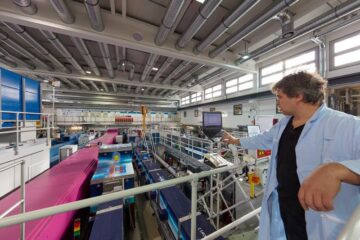Researcher Proposes That Food Contaminant Causes Testicular Cancer

The probable causes of testicular cancer have long eluded scientists. What they do know is that it most often strikes men between the ages of 15 and 34, and that northern Europe — notably Denmark — has the highest incidence of the disease. Now a new hypothesis may explain that pattern. According to a report published in the February issue of the journal Cancer Causes and Control, a toxin found in contaminated cereal grains, pork products and coffee could be the culprit.
That toxin, says Wake Forest University researcher Gary G. Schwartz, is ochratoxin A (OTA), a by-product of molds that grow on a variety of plant products and grains (especially rye) and a known carcinogen in animals. When animals consume the moldy grains, they also ingest the OTA. Pork products in particular exhibit high levels of contamination, and citizens of Denmark, Schwartz notes, consume the most pork products and rye per-capita in Europe.
Schwartz proposes that individuals are exposed to OTA either in early childhood or in the womb. Once internalized, he hypothesizes, the OTA damages the testicular DNA. This alteration then lies dormant until testicular growth during puberty, when the cancer begins to grow.
Further analysis of the effect of OTA when present in high levels in the diet of mothers and their male children is necessary, Schwartz concludes. But should future research bear his suspicions out, certain compounds known to inhibit OTA’s effects in animals—aspirin and vitamins A, C and E, for example—might offer similar protective effects to humans.
Media Contact
Alle Nachrichten aus der Kategorie: Medizin Gesundheit
Dieser Fachbereich fasst die Vielzahl der medizinischen Fachrichtungen aus dem Bereich der Humanmedizin zusammen.
Unter anderem finden Sie hier Berichte aus den Teilbereichen: Anästhesiologie, Anatomie, Chirurgie, Humangenetik, Hygiene und Umweltmedizin, Innere Medizin, Neurologie, Pharmakologie, Physiologie, Urologie oder Zahnmedizin.
Neueste Beiträge

Bakterien für klimaneutrale Chemikalien der Zukunft
Forschende an der ETH Zürich haben Bakterien im Labor so herangezüchtet, dass sie Methanol effizient verwerten können. Jetzt lässt sich der Stoffwechsel dieser Bakterien anzapfen, um wertvolle Produkte herzustellen, die…

Batterien: Heute die Materialien von morgen modellieren
Welche Faktoren bestimmen, wie schnell sich eine Batterie laden lässt? Dieser und weiteren Fragen gehen Forschende am Karlsruher Institut für Technologie (KIT) mit computergestützten Simulationen nach. Mikrostrukturmodelle tragen dazu bei,…

Porosität von Sedimentgestein mit Neutronen untersucht
Forschung am FRM II zu geologischen Lagerstätten. Dauerhafte unterirdische Lagerung von CO2 Poren so klein wie Bakterien Porenmessung mit Neutronen auf den Nanometer genau Ob Sedimentgesteine fossile Kohlenwasserstoffe speichern können…





















